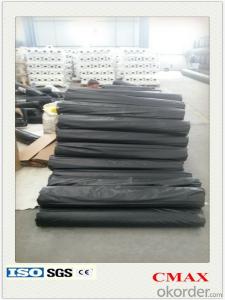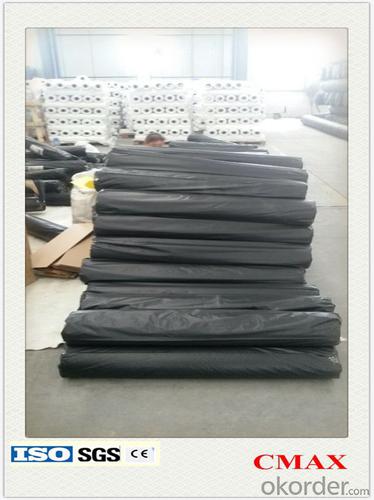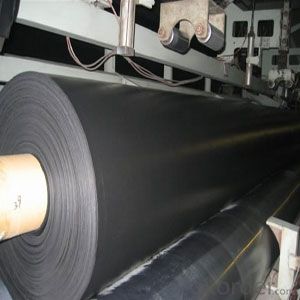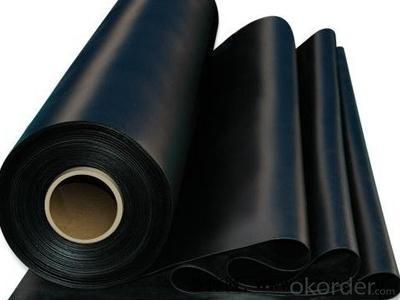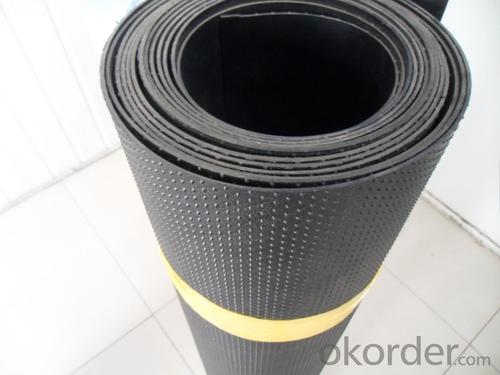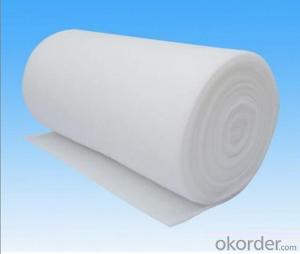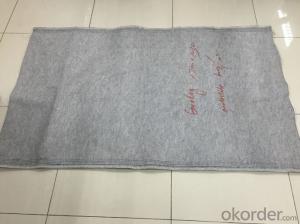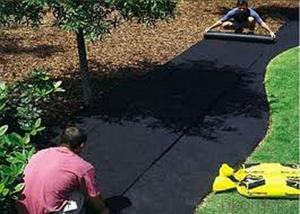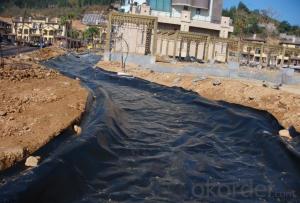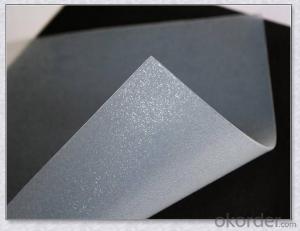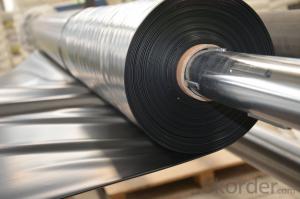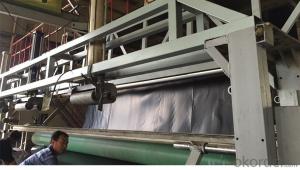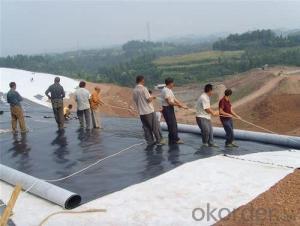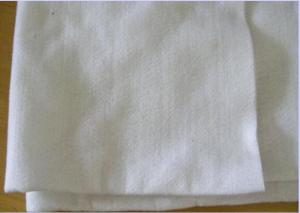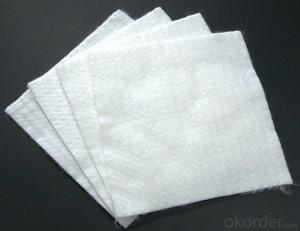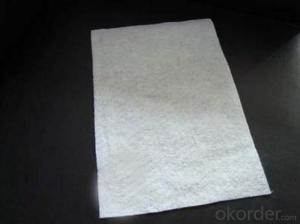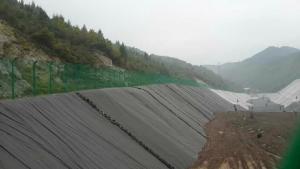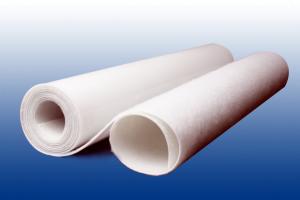Geotextile for Gardening Impermeable HDPE Geomembrane for Shrimp Pond
- Loading Port:
- China main port
- Payment Terms:
- TT OR LC
- Min Order Qty:
- 1000 m²
- Supply Capability:
- 1000000 m²/month
OKorder Service Pledge
OKorder Financial Service
You Might Also Like
Specification
Introduction
HDPE Smooth Face geomembrane are the preferred products for lining projects requiring low permeability , corrosion protection ,
exceptional chemical and ultraviolet resistance properties , which makes them extremely cost
effective for many applications such as waste landfill , storage reservoirs ,canals , powr plants in energy , vapor barriers ,
and waste water treatment in the line of industry and aquaculture and agriculture projects.
2. Product Feature
1) Good physical and mechanic performance
2) High tearing resistance, strong deformation adaptability
3) Puncture-resisting, aging resisting, ultra-violet radiation, oil and salt, and corrosion resistance
4) Good adaptability to high and low temperature, non-toxicity, long service life
5) Good waterproof, drainage, anti-seepage and damp proof effects
6) Complete width and thickness specifications, low cost and easy installation.

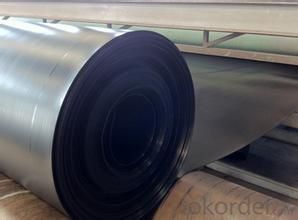
Packaging & Shipping
Packing: PLASTIC FILM INSIDE, AND WOVEN BAG OUTSIDE
Shipping: About 15 days after receipt the deposit
geotextile fabric
permeability,filtration,easy for construction
ISO and CE certificate
Good quality and competitive price
Our Service
Quality assurance
1.On a regular basis or as per your request,we entrust national testing agencies to conduct quality inspections
2. Strictly in accordance with the ISO9001-2008 international quality system standard,we monitor and manage the whole process throughout production,quality testing,and measurement to ensure product quality
3. For quality-related construction delay or substandard construction(except for damage or losses due to customer’s responsibility or irresistible natural disasters),we have refunding,replacement,and repair services.We will respond to customers’ feedbacks on quality issues within 24 hours.
After-sales service
1.In order to provide customers with comprehensive technical support,we will provide technical and other related information upon request in a timely manner.
2.In required,we will appoint specialized technicians to the construction site to give technical trainings to construction people,and offer technical guidance throughout the whole construction process.
3.For damage due to shipment and delivery,after we receive the complaint,we will check the issure through provided pictures and videos.If our responsibility is confirmed,we wil offer free replacement.
4.When the construction is completed,as your request,our technical staff may participate in the final acceptance.
FAQ:
Q: What kind of payments does jenor support?
A: T/T, L/C, Cash are accepted.
Q: Do you charge for the samples?
A: Accordeing to our company policy, the samples are free, we only charge the freight fee. And we will return the freight fee during the next order.
Q: Can you produce according to customers' design?
A: Sure, we are professional manufacturer, OEM and ODM are both welcome.
Q: Do you have other products?
A: Yes, please check the pictures:
- Q: Geotextile what is the law?
- Geotextiles, engineering cloth, impermeable cloth, non-woven fabrics, polyester cloth, health cloth, permeable cloth, etc., which are based on the use of different materials or different materials. But in fact are geotextiles. Geotextile types are many: woven geotextile, staple acupuncture geotextile, filament geotextile, impervious geotextile, non-woven geotextile, composite geotextile, warp-resistant geotextile
- Q: Is there a geotextile for reed cultivation?
- Big slope pond words use better, need depth laying, with geomembrane
- Q: What are the key considerations for geotextile installation in high temperature environments?
- When installing geotextiles in high temperature environments, some key considerations include selecting a geotextile material that can withstand the elevated temperatures, ensuring proper anchoring and securing of the geotextile to prevent movement or damage due to thermal expansion, using appropriate installation techniques to minimize heat-related distortion or shrinkage, and conducting regular inspections and maintenance to address any potential degradation caused by prolonged exposure to high temperatures.
- Q: Can geotextiles be used in mine tailings dewatering applications?
- Yes, geotextiles can be used in mine tailings dewatering applications. Geotextiles are commonly used in mining operations to separate and filter solids from liquids, including in the dewatering of mine tailings. They can effectively retain fine particles while allowing water to pass through, aiding in the process of dewatering and facilitating the management and disposal of mine tailings.
- Q: How do geotextiles help in filtration of stormwater?
- Geotextiles help in filtration of stormwater by acting as a barrier that allows water to pass through while trapping sediment and pollutants. They prevent the clogging of drainage systems by retaining particles and promoting the flow of clean water, thus improving water quality and reducing the risk of flooding.
- Q: Staple acupuncture non-woven geotextile is what material synthesis
- Using polyester staple fiber fineness of 6-12 denier, the length of 54-64mm polyester crimped short fiber as raw material. Polyester staple fiber is made of polyester (that is, polyethylene terephthalate, referred to as PET, from PTA and MEG polymerization) re-spinning into the fiber after cutting.
- Q: What are the specifications for geotextiles in civil engineering projects?
- Geotextiles used in civil engineering projects have specific specifications related to their strength, permeability, durability, and filtration properties. These specifications ensure that geotextiles can effectively separate, reinforce, filter, and drain soil or other materials in various construction applications such as roads, embankments, slopes, and retaining walls.
- Q: Can geotextiles be used in oil and gas industry applications?
- Yes, geotextiles can be used in oil and gas industry applications. Geotextiles are commonly used for erosion control, soil stabilization, and filtration purposes in various industries, including the oil and gas industry. They can be used in applications such as pipeline construction, drilling operations, and containment systems. Geotextiles help to prevent soil erosion, provide stability for construction sites, and aid in filtration and separation of materials in oil and gas operations.
- Q: What are the challenges associated with the installation of geotextiles?
- Some challenges associated with the installation of geotextiles include ensuring proper alignment and placement of the fabric, securing it to the ground to prevent shifting or movement, and properly overlapping and connecting multiple pieces of geotextile to create a continuous barrier. Other challenges may include dealing with uneven or unstable soil conditions, working in difficult terrain or access areas, and ensuring the geotextile does not get damaged during the installation process. Additionally, the selection and installation of appropriate anchoring methods and the need for specialized equipment or expertise can also pose challenges.
- Q: Can geotextiles be used in the protection of underground tanks?
- Yes, geotextiles can be used in the protection of underground tanks. Geotextiles are commonly used as a protective layer to prevent damage to underground tanks from surrounding soil movement or external pressure. They provide an effective barrier between the tank and the surrounding soil, reducing the risk of punctures, abrasions, and corrosion. Additionally, geotextiles can help with filtration and drainage, ensuring proper functioning and longevity of the underground tank.
Send your message to us
Geotextile for Gardening Impermeable HDPE Geomembrane for Shrimp Pond
- Loading Port:
- China main port
- Payment Terms:
- TT OR LC
- Min Order Qty:
- 1000 m²
- Supply Capability:
- 1000000 m²/month
OKorder Service Pledge
OKorder Financial Service
Similar products
Hot products
Hot Searches
Related keywords
